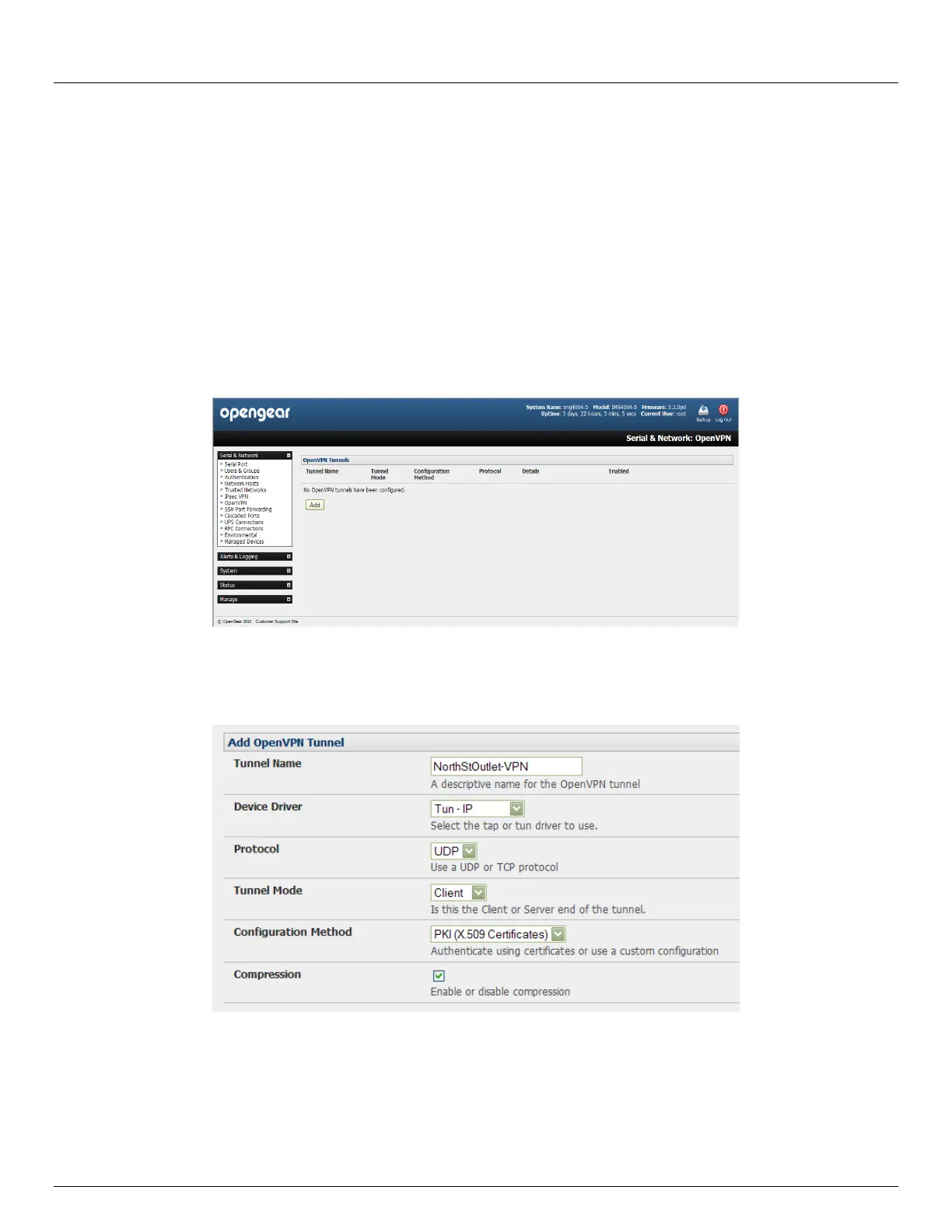Chapter 4: Serial Port, Device and User Configuration
76 Console Server & RIM Gateway User Manual
is easy to build cross-platform, point-to-point VPNs using x509 PKI (Public Key Infrastructure) or custom configuration
files.
OpenVPN allows secure tunneling of data through a single TCP/UDP port over an unsecured network, thus providing
secure access to multiple sites and secure remote administration to a console server over the Internet.
OpenVPN also allows the use of Dynamic IP addresses by both the server and client thus providing client mobility. For
example, an OpenVPN tunnel may be established between a roaming windows client and an Opengear advanced
console server within a data center.
Configuration of OpenVPN can be complex so Opengear provides a simple GUI interface for basic set up as described
below. However for more detailed information on configuring OpenVPN Access server or client refer to the HOW TO and
FAQs at http://www.openvpn.net
4.10.1 Enable the OpenVPN
Select OpenVPN on the Serial & Networks menu
Click Add and complete the Add OpenVPN Tunnel screen
Enter any descriptive name you wish to identify the OpenVPN Tunnel you are adding, for example NorthStOutlet-
VPN
Select the Device Driver to be used, either Tun-IP or Tap-Ethernet. The TUN (network tunnel) and TAP (network
tap) drivers are virtual network drivers that support IP tunneling and Ethernet tunneling, respectively. TUN and
TAP are part of the Linux kernel.
Select either UDP or TCP as the Protocol. UDP is the default and preferred protocol for OpenVPN.
